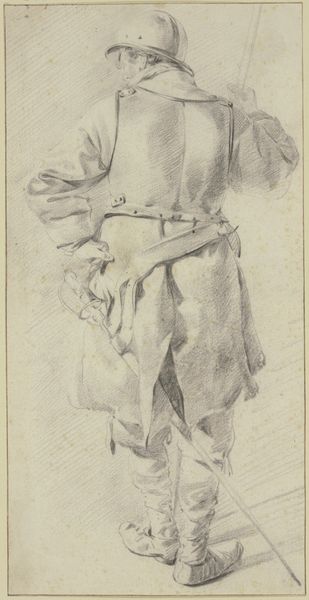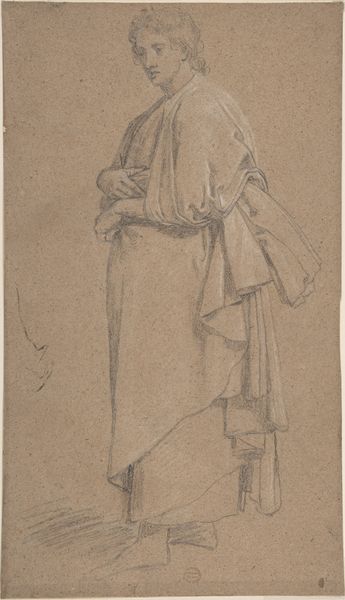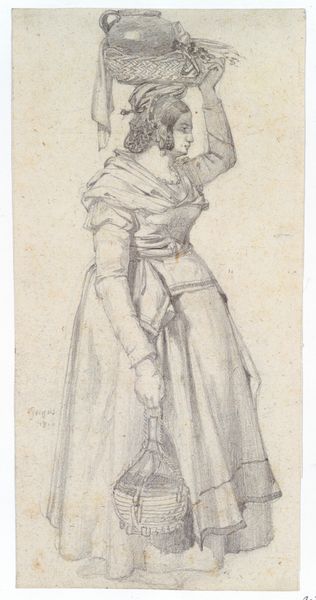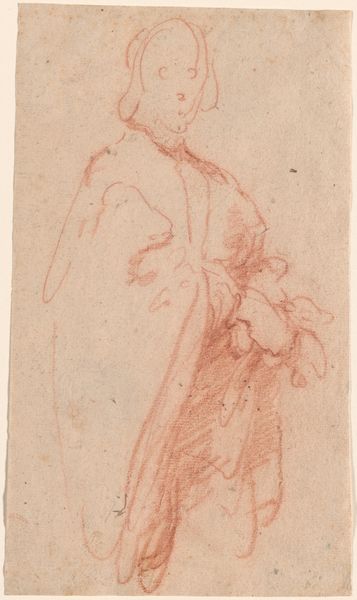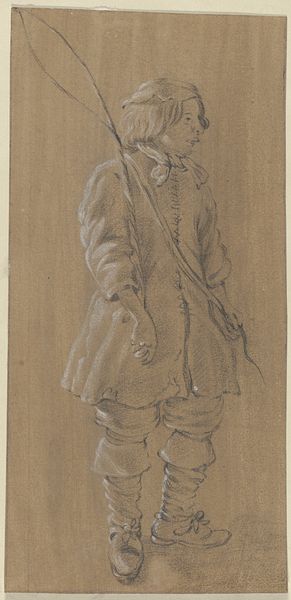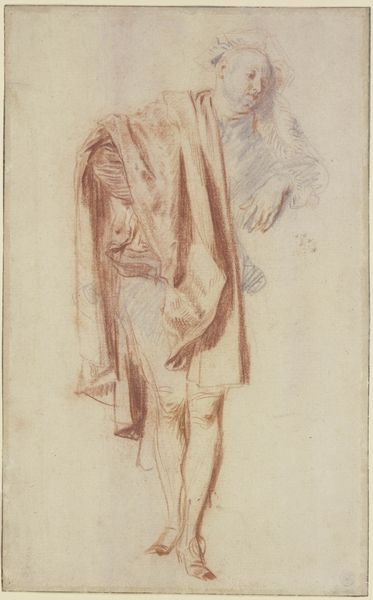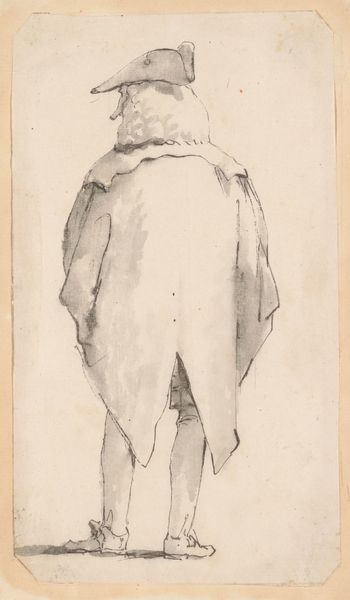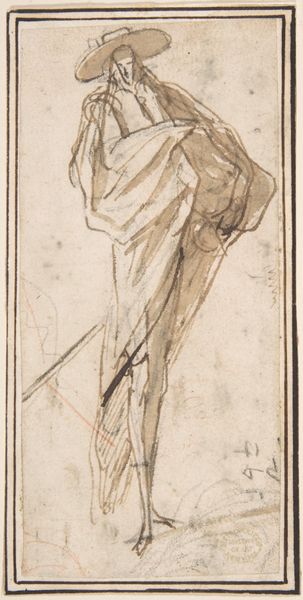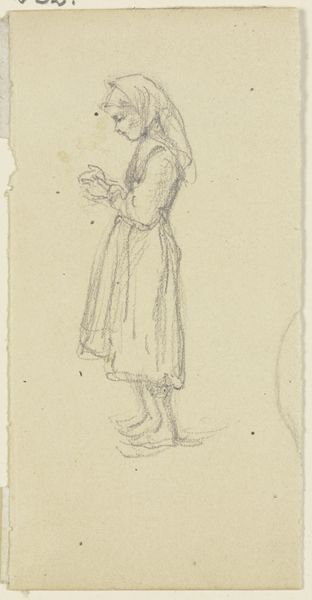
drawing, ink, graphite
#
portrait
#
pencil drawn
#
drawing
#
toned paper
#
baroque
#
figuration
#
ink
#
graphite
#
14_17th-century
Copyright: Public Domain
Curator: So, we're looking at a drawing from the 17th century, Jacques Callot’s "Old Woman Seen From Behind." It's a graphite and ink piece on toned paper. Editor: Right away, I’m struck by the tenderness. It's a fleeting, almost accidental study, but there's so much dignity etched into that bent back and layered clothing. She looks utterly self-contained. Curator: Absolutely. Callot was a master of capturing the everyday lives of people, particularly those on the margins. He came from an aristocratic background, but frequently depicted peasants and, as we see here, the elderly. It speaks to a shifting interest during that period in representing diverse social strata. Editor: It does make you wonder about the politics of looking. Why this woman, at this angle? It almost feels like catching her unaware. Is it admiration or something else? I sense a respect for age, but there's also something unknowable about her in this position. The back of the head can be so mysterious, can’t it? Curator: The fact that she's anonymous is significant. This isn't a portrait commissioned by a wealthy patron to celebrate a specific individual. It’s about observing and documenting a type of person prevalent within the broader social fabric. Editor: I love how he captures the weight of her garments. They seem heavy, enveloping. Almost like she's carrying the weight of the world, you know? You can almost feel the scratch of wool against skin. And the minimal detail in her face invites imagination to take over – a true collaboration between the artist and the viewer. Curator: Exactly. It reflects the Baroque interest in realism, but it is also indicative of broader developments in printmaking. He may well have been working out the composition for a later engraving or etching featuring a character like this. Editor: Hmmm... it still lands, to me, less like a study, more like a memory. Almost as if he just glanced up from another pursuit to notice the play of light on her heavy shawls, and rapidly memorialized her to return later to the work. And I suppose that is the heart of so many studies. I will wonder about this woman and the way she moves about the world all day. Curator: Yes, perhaps we’re both right. Callot was working with social types, capturing their presence on the streetscape – but this very human representation ensures these depictions never simply descend into caricature.
Comments
No comments
Be the first to comment and join the conversation on the ultimate creative platform.
